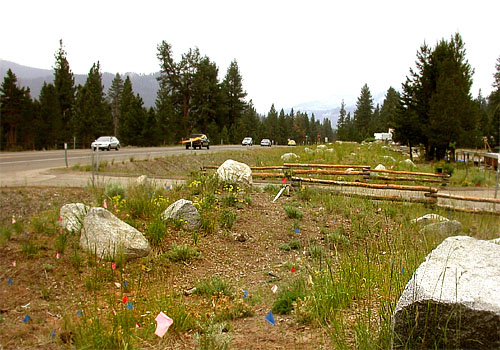Erosion Control Toolbox: Liners and Seedlings
Introduction

Liners and seedlings work involves planting small perennial or woody shrubs as typically supplied by commercial nurseries. Liners are in containers between 1.5 to 3 inches in diameter and 8 inches in depth. Seedlings are approximately the same size as Liner plants but are a bare root plant without a container.
When to Use This Treatment
Use for disturbed slopes or flat areas for revegetation or erosion control purposes.
Benefits
- For more reliable revegetation Liners and Seedlings can supplement planting provided by hydroseeding or dry seeding alone
- Vegetation provides long-term control of erosion
- Can be used in areas with limited vehicular access
Limitations
- Availability must be verified prior to specifying, as specific plant material may be limited
- Protection from erosion provided only after plant growth has begun
- May require planting during the rainy season or supplemental irrigation for effective plant establishment
Consider Using With
Standard Specifications
- Refer to Standard Specifications - Section 20 Landscape
- Refer to Standard Special Provisions - Section 20 Landscape
Estimate Information
- For Liners use Bid Item Code 204013 - Plant (Group M)
- For Seedlings use Bid Item Code 204015 - Plant (Group S)
References
- H. Dana Bowers, et al. 1947. Erosion Control on California State Highways
- California Department of Transportation, "Roadside Erosion Control and Management Studies", May 2008.
- David Steinfield, Scott Riley, Kim Wilkinson, Thomas D. Landis, Lee Riley, et. al. 2017. "Roadside Revegetation, An Integrated Approach to Establishing Native Plants and Pollinator Habitat"
- Michael Hogan, 2009. "Sediment Source Control Handbook, An Adaptive Approach to Restoration of Disturbed Areas"
- Toolkit Tool 11 - Vegetative Treatments, pg 130
Updated: January 22, 2019

